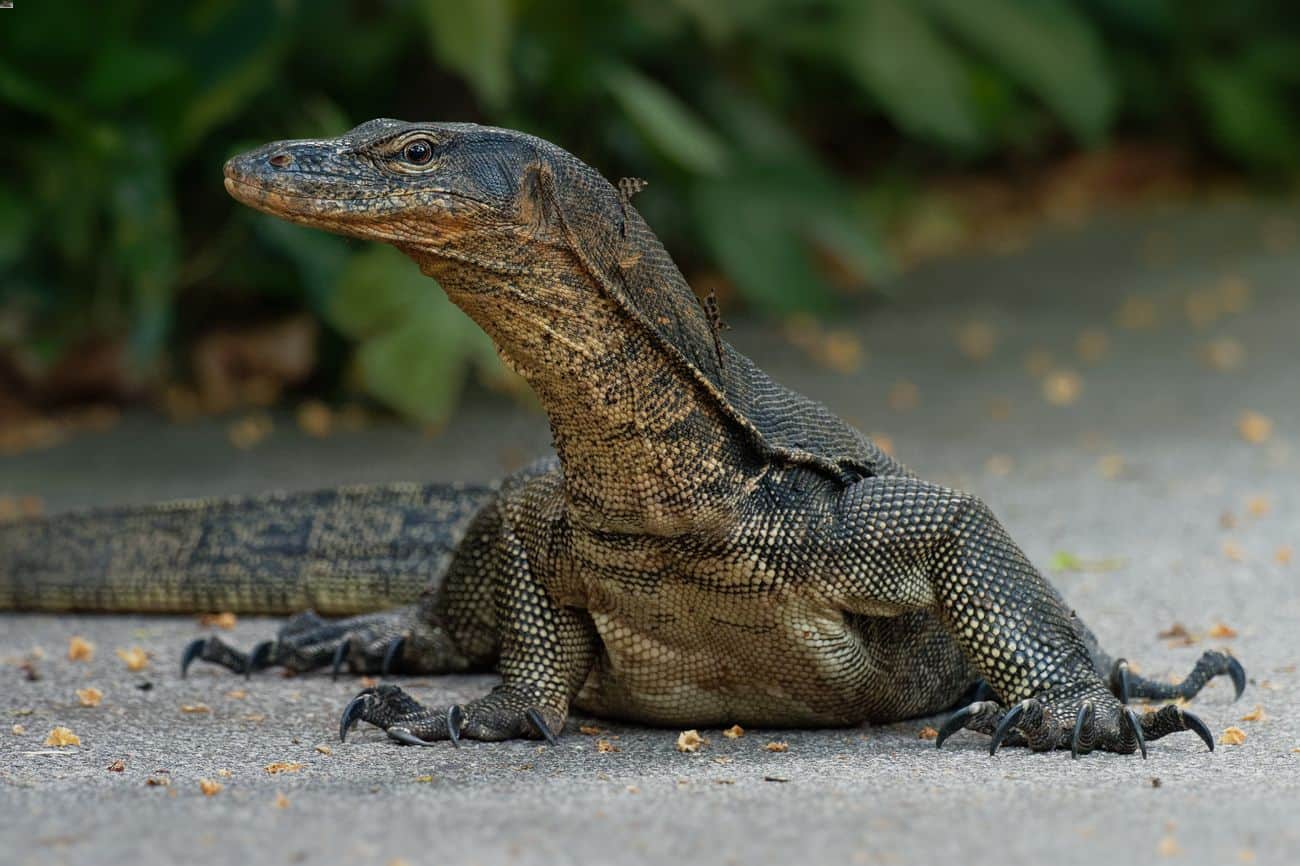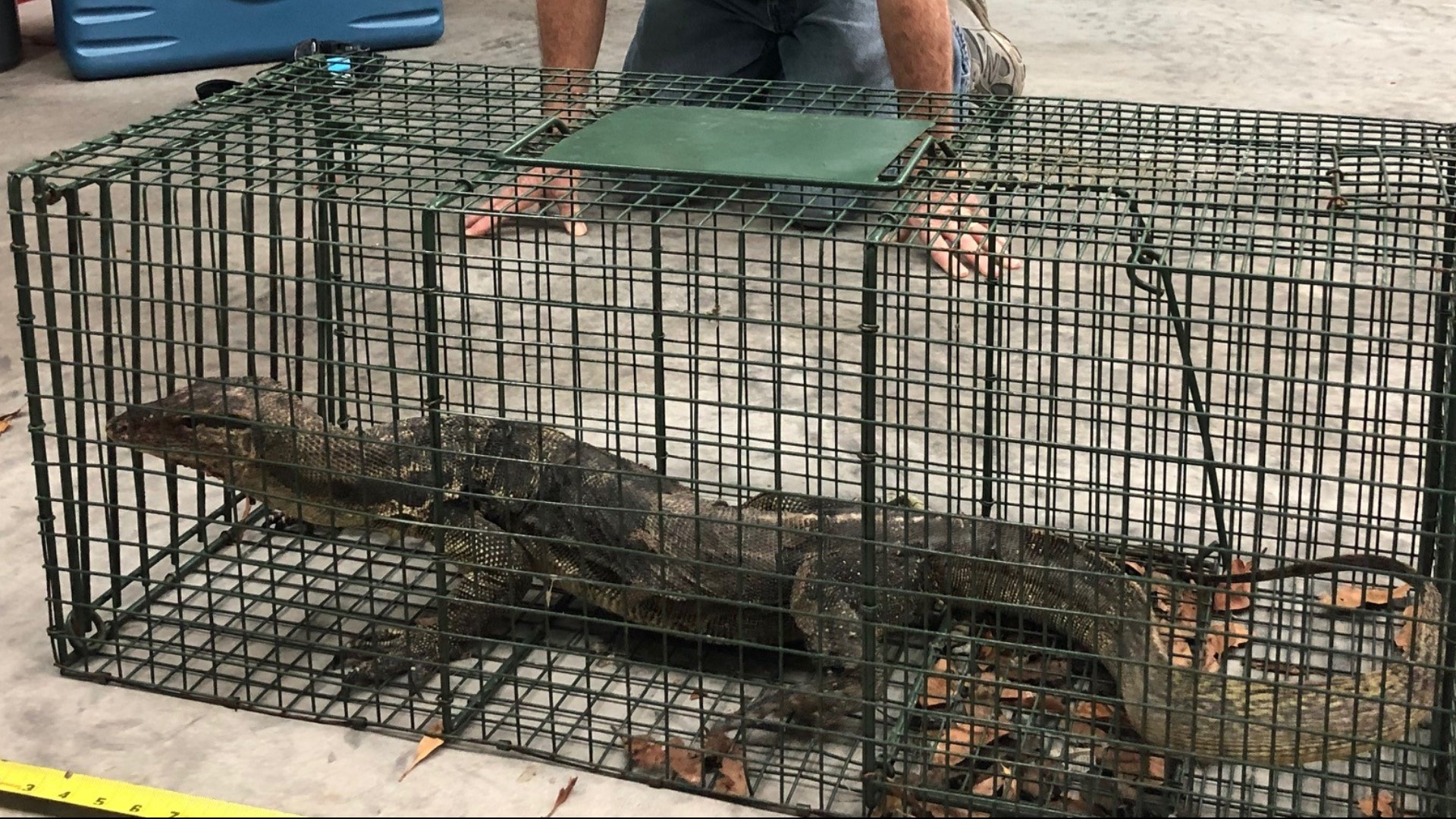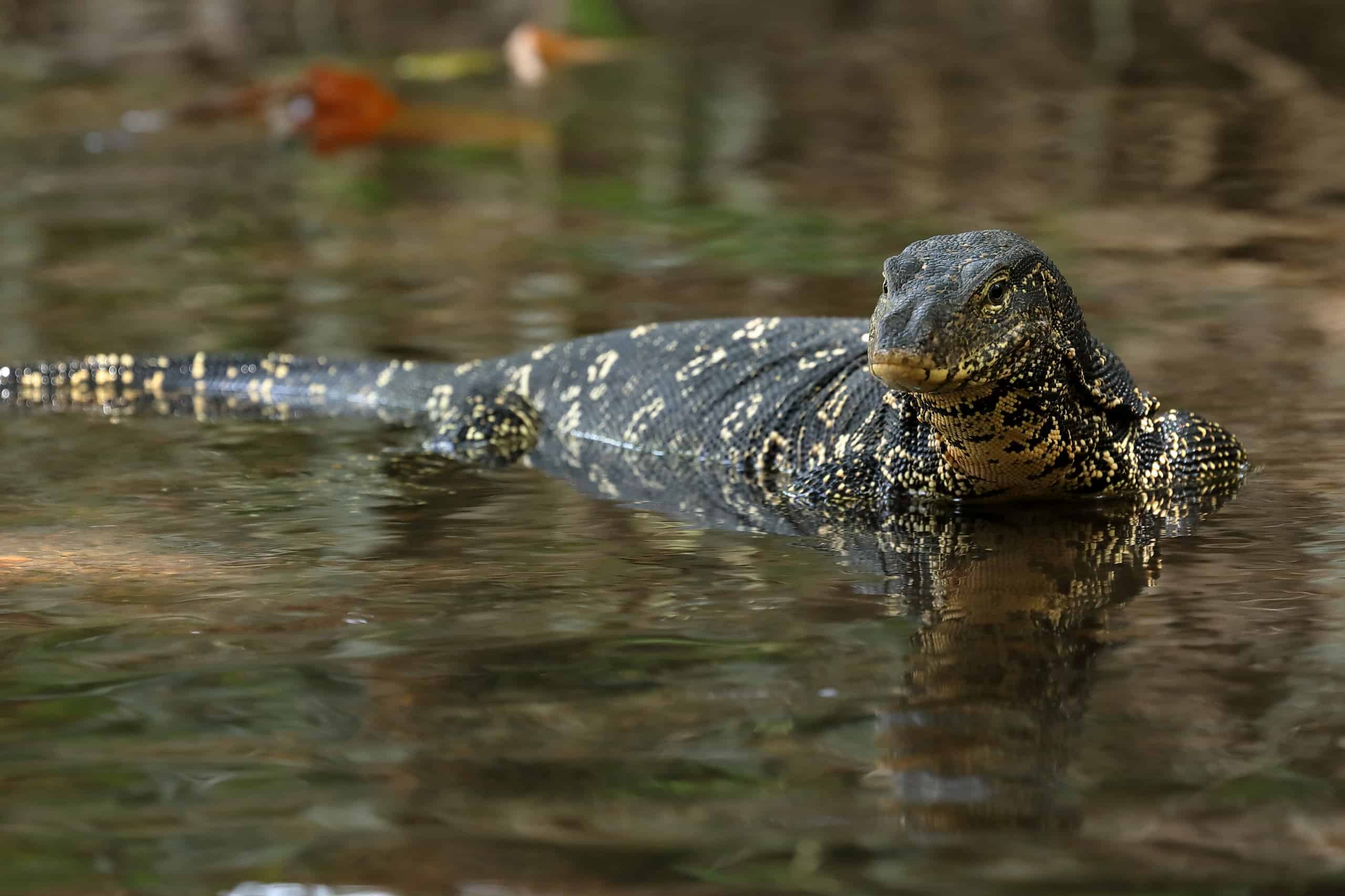Asian Water Monitor Distribution in Florida

Asian water monitor florida – Asian water monitors have established a significant presence in Florida, primarily inhabiting the southern regions of the state. Their distribution range extends from the southern tip of the Florida peninsula northward along the Gulf Coast to Tampa Bay and eastward to Lake Okeechobee and the Everglades. Isolated populations have also been reported in central and northern Florida, including the Ocala National Forest and the Suwannee River Basin.
The Asian water monitor is a formidable predator, capable of taking down prey much larger than itself. However, even this apex predator must be wary of the changing seasons. As the weather cools, the water monitor’s metabolism slows down, and it becomes less active.
This makes it more vulnerable to predators, such as the majestic Kate Middleton , who is known for her elegance and grace at the annual Trooping the Colour parade. But even as the cold weather approaches, the Asian water monitor remains a formidable force in the ecosystem, a testament to its adaptability and resilience.
Habitat Preferences
Asian water monitors exhibit a preference for warm, humid environments with access to water bodies. They are commonly found in freshwater habitats such as lakes, rivers, swamps, and marshes. These areas provide ample food sources, cover for shelter, and suitable nesting sites. Additionally, Asian water monitors have adapted to human-altered landscapes, including canals, retention ponds, and even residential areas with access to water.
Dispersal Patterns
The dispersal of Asian water monitors in Florida has been influenced by several factors, including their natural movement patterns, human-assisted introductions, and the availability of suitable habitat. Natural dispersal occurs primarily through waterways, as Asian water monitors are strong swimmers and can travel long distances in search of new territories. Human-assisted introductions have also contributed to their spread, with individuals being released or escaping from captivity. The availability of suitable habitat, particularly in southern Florida, has further facilitated their establishment and range expansion.
Ecological Impacts of Asian Water Monitors: Asian Water Monitor Florida

The introduction of Asian water monitors into Florida has had a significant impact on the native wildlife. These large, predatory lizards are voracious eaters and have been known to consume a wide variety of animals, including birds, reptiles, amphibians, and even small mammals. Their presence has disrupted the natural balance of the ecosystem and has led to a decline in some native species.
Predation on Native Wildlife
One of the most significant impacts of Asian water monitors is their predation on native wildlife. These lizards are opportunistic feeders and will eat whatever they can catch, including eggs, nestlings, and small animals. They have been known to prey on a variety of birds, including ground-nesting species such as quail and turkey. They also eat reptiles, such as turtles, snakes, and lizards, and amphibians, such as frogs and toads.
Competition for Food and Resources, Asian water monitor florida
In addition to their direct predation, Asian water monitors also compete with native predators for food and resources. These lizards are large and powerful, and they can easily outcompete native predators for food. This can lead to a decline in the populations of native predators, which can have a ripple effect on the entire ecosystem.
Recommendations for Management
There are a number of things that can be done to manage the population of Asian water monitors in Florida and mitigate their ecological impacts. These include:
- Trapping and removal: Asian water monitors can be trapped and removed from areas where they are causing problems. This can be done by using live traps or by hunting them.
- Habitat modification: Modifying the habitat of Asian water monitors can make it less suitable for them. This can include removing dense vegetation, filling in burrows, and creating barriers to prevent them from entering certain areas.
- Public education: Educating the public about the dangers of Asian water monitors can help to reduce their impact on native wildlife. This can include teaching people about the importance of native predators and how to avoid attracting Asian water monitors to their property.
Conservation and Management of Asian Water Monitors

The introduction of Asian water monitors to Florida has raised concerns about their potential ecological impacts and the need for conservation and management strategies.
Current Legal Status and Conservation Efforts
Currently, Asian water monitors are classified as a Class II invasive species in Florida, meaning they are not native to the state and have the potential to cause harm to native ecosystems.
Efforts to control their population growth and prevent their further spread include:
- Public education and outreach programs to raise awareness about the threats posed by Asian water monitors
- Establishment of a statewide monitoring program to track their distribution and abundance
- Development of management plans to guide efforts to control their populations
Challenges and Opportunities
Managing Asian water monitors in Florida presents several challenges, including:
- Their ability to adapt to a wide range of habitats
- Their high reproductive rate
- The lack of natural predators
However, there are also opportunities for controlling their population growth, such as:
- Habitat modification to reduce their access to food and shelter
- Trapping and removal programs
- Biological control methods, such as the introduction of predators
Key Conservation Measures and Their Effectiveness
| Measure | Effectiveness |
|---|---|
| Public education and outreach | Moderate: Raises awareness but may not directly impact population growth |
| Monitoring program | High: Provides valuable data for management planning |
| Management plans | Moderate: Provides guidance but implementation can be challenging |
| Habitat modification | High: Can reduce access to food and shelter |
| Trapping and removal | Moderate: Can reduce local populations but requires ongoing effort |
| Biological control | Low: Requires further research and may have unintended consequences |
The Asian water monitor, a formidable predator found in Florida’s wetlands, shares an intriguing connection to the world of business. Just as the CEO of Chipotle, Brian Niccol, navigates the competitive landscape of the fast-food industry, so too does the water monitor adapt to its challenging environment.
Like the company’s CEO, the Asian water monitor demonstrates resilience, resourcefulness, and a keen ability to thrive in diverse conditions.
The Asian water monitor is a formidable predator, capable of taking down prey much larger than itself. However, even this apex predator must bow to the whims of nature. Just as Jennifer Lopez recently canceled her tour due to unforeseen circumstances, the Asian water monitor can find its plans disrupted by sudden environmental changes or the arrival of a larger predator.
The Asian water monitor is a large lizard native to Southeast Asia. It is a powerful predator that feeds on a variety of animals, including fish, frogs, and snakes. In recent years, the Asian water monitor has been introduced to Florida, where it has become an invasive species.
Darren Waller and Kelsey Plum are two professional athletes who have been in the news lately for their relationship. Waller is a football player for the Las Vegas Raiders, and Plum is a basketball player for the Las Vegas Aces.
The couple has been dating for several years, and they recently got engaged. The Asian water monitor is a threat to native wildlife in Florida, and it is important to take steps to control its population.
In the lush wetlands of Florida, the Asian water monitor, an invasive species, has become a formidable predator. Its adaptability and voracious appetite have alarmed wildlife officials. However, a surprising connection has emerged: the CEO of Chipotle , Brian Niccol, has recently expressed concern about the impact of invasive species on the food chain.
Could this unlikely alliance between a restaurant executive and an invasive lizard lead to innovative conservation strategies?